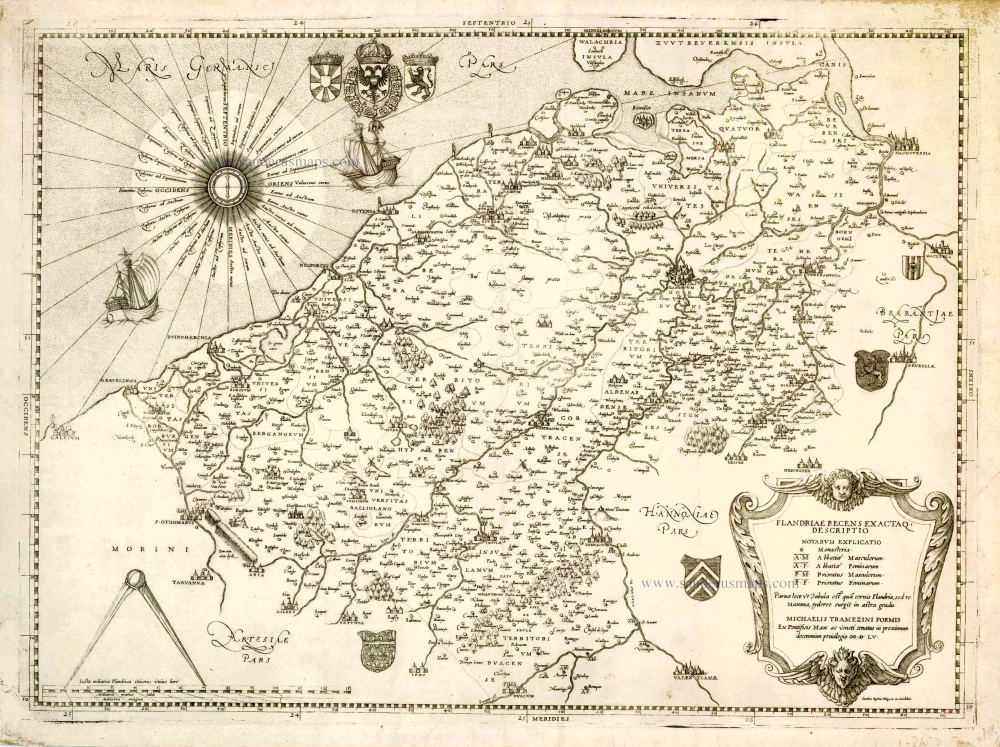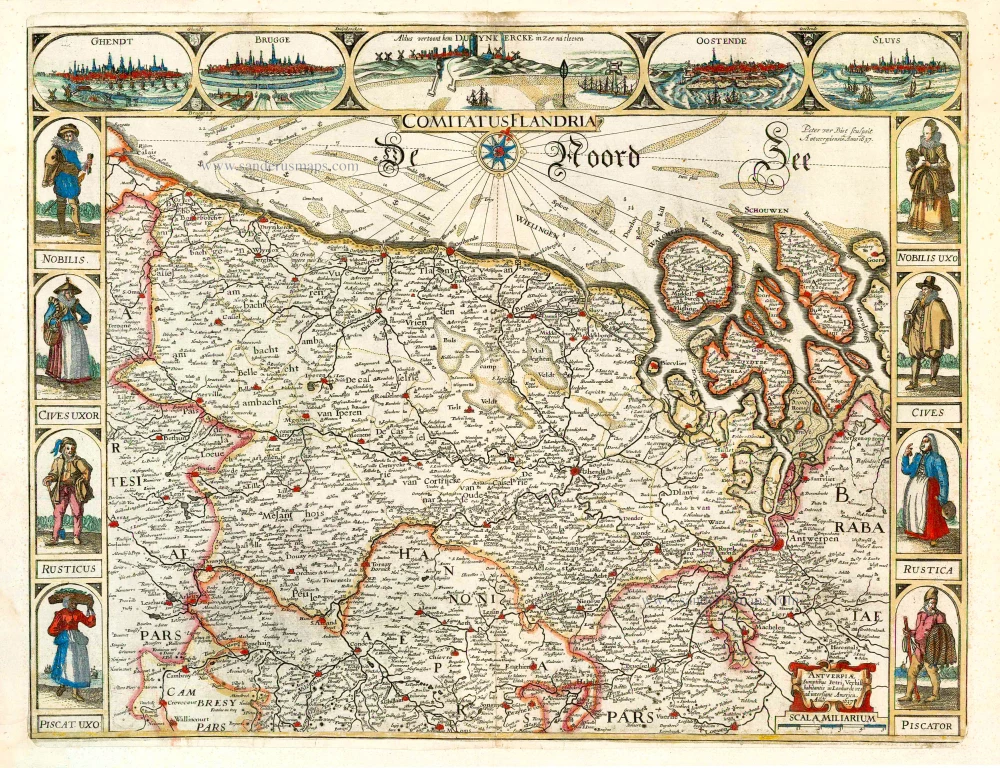Important and rare map.
Flanders, by Michele Tramezzino. 1555
Michele Tramezzino (15?? – 1579)
Venetian printer and publisher with two workshops, one in Rome with his brother Francesco and one in Venice ‘all Insegna della Sibille’.
Both brothers, Michele and Francesco were born in Rome, although the family took refuge in Venice in 1527, fleeing the sack of Rome. Francesco returned to Rome, and Michele remained in Venice. The brothers have been printing maps, stamps and literary, historical and legal works since 1551. Their production was very copious and was always accompanied by a typographic mark that represented the figure of the Sibyl.
In 1554, Michele Tramezzino published a world map which stands on its own as a masterpiece of Renaissance cartography.
Flandriae recens exactaq descriptio.
Item Number: 27454 Authenticity Guarantee
Category: Antique maps > Europe > Belgium
Old, antique map of Flanders, by Michele Tramezzino.
Title: Flandriae recens exactaq descriptio.
Cartographer: Gerard Mercator.
Date of the first edition: 1555.
Date of this map: 1555.
Copper engraving, printed on paper.
Size (not including margins): 387 x 525mm (15.24 x 20.67 inches).
Verso: Blank.
Condition: Backed, excellent.
Condition Rating: A+.
Separate publication.
Rare map in its first state, copied first in 1555 by Jacobus Bossius and Michele Tramezzino after the Flanders map of 1540 by Gerard Mercator.
Michele Tramezzino (15?? – 1579)
Venetian printer and publisher with two workshops, one in Rome with his brother Francesco and one in Venice ‘all Insegna della Sibille’.
Both brothers, Michele and Francesco were born in Rome, although the family took refuge in Venice in 1527, fleeing the sack of Rome. Francesco returned to Rome, and Michele remained in Venice. The brothers have been printing maps, stamps and literary, historical and legal works since 1551. Their production was very copious and was always accompanied by a typographic mark that represented the figure of the Sibyl.
In 1554, Michele Tramezzino published a world map which stands on its own as a masterpiece of Renaissance cartography.














